Alaska Fish & Wildlife News
May 2019
The Hunter Access Program
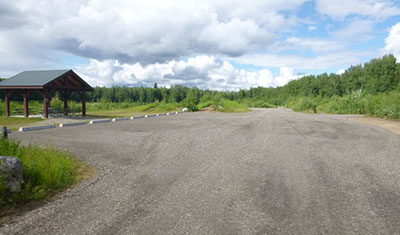
Alaskans enjoy harvesting fish, wildlife, and edible plants – as well as viewing wildlife on our abundant public lands. The Division of Wildlife Conservation has been working to ensure Alaskans have access to their resources.
In Alaska, Pittman-Robertson (PR) federal funding helps pay for Alaska Department of Fish and Game (ADF&G) wildlife management and research, which ensures hunting opportunities for Alaskans and visitors. A few years ago, Americans were buying unprecedented numbers of guns and ammunition, creating an unusual boost in federal PR funds. This boost allowed ADF&G Division of Wildlife Conservation (DWC) to begin funding a new type of wildlife conservation project in Alaska, enhancing hunter access.
Hunter access projects focus on developing and enhancing access to wildlife resources for hunting, trapping, and wildlife viewing. These projects span a wide variety of projects and include building, improving, and repairing public use trails, roads, parking lots, campgrounds, boat launches, bridges, and more. Projects provide additional or improved opportunity and access to Alaska’s lands for hunters and other recreational users.
Over the past three years DWC has funded several hunter access projects that have been completed, with more scheduled to be finished in 2019. In 2016 ADF&G Division of Wildlife Conservation staff collaborated with Department of Natural Resources (DNR), our sister agency responsible for managing state land, to make the first PR hunter access improvements outside of ADF&G managed state game refuges.
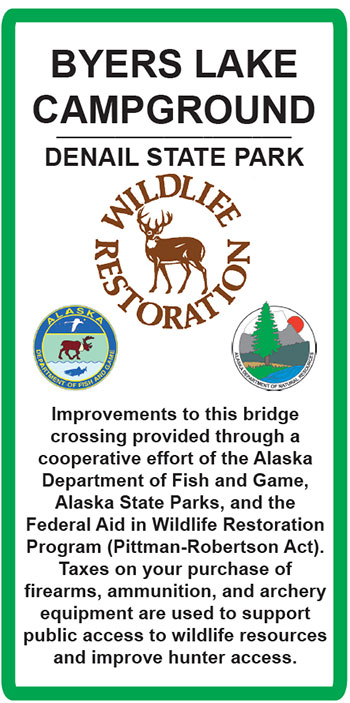
DWC partnered with DNR Division of Mining, Land, and Water on three projects to improve hunter access trails and trailheads. The first project created a new four-mile trail within the Tangle Lakes Archeological District off the Denali Highway that links the Maclaren Summit trail to Sevenmile Lake and Glacier Gap trails. The second project included installation of informational kiosks at multiple trailheads along the Denali Highway to help hunters and other users better understand rules and regulations in the area. And the third project repaired damaged portions of the popular Rex Trail, located off the Parks Highway, and also rerouted the trail off of private property and onto public land.
ADF&G also cooperated with DNR Division of Parks & Outdoor Recreation on five projects to improve hunter access trails, trailheads, boat launches, and campgrounds. The first project improved three primitive trailheads used as access points for backcountry hunting in the Chena River State Recreation Area near Fairbanks. These included the Compeau, Mastadon, and Upper Chena Dome trailheads, which included construction of 50 parking spaces, sanitary facilities, informational signs, and enhanced traffic flow. The second project improved the Olnes Pond and Whitefish campgrounds within the Lower Chatanika River State Recreation Area near Fairbanks. Roads and 20 campsites were improved to accommodate larger vehicles (RVs and trucks with trailers) as well as sanitary facilities and informational signs installed.
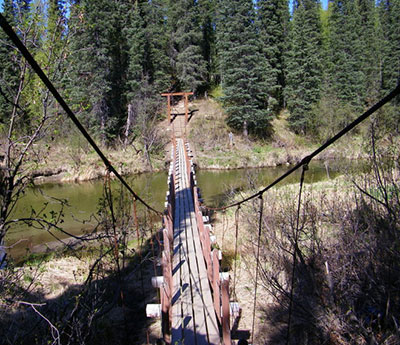
The third project replaced the main bridge crossing Byers Creek within Denali State Park, which had failed and collapsed into the creek in 2016. The new bridge restores the primary access point into the Park and continuity of the Byers Lake trail system, as well as the access it provides to backcountry hunting areas. Two other projects, Penguin Creek bridge replacement in Chugach State Park and Moon Lake State Recreation Site campground improvements near Tok, will be constructed in 2019.
And this is just the beginning. ADF&G Division of Wildlife Conservation has funded an additional dozen projects in 2017 and 2018 that are in various stages of design and development with most scheduled to be complete in the next two to three years. These include renovations on the popular Treadwell Ditch trail near Juneau; parking and boat launch improvements at Lake Louise; road and parking improvements at Jim Lake in the Knik River Public Use area; improvements to the Chilkoot Lake road corridor near Haines; road improvements and bridge replacement on Tanana Valley forest roads near Fairbanks; and trail construction connecting Kesugi to Curry Ridge in Denali National Park.
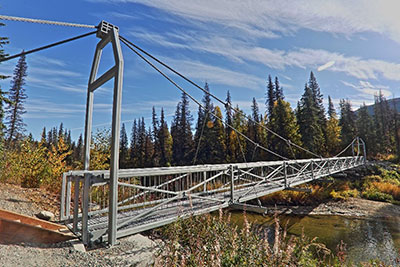
Pittman-Robertson funds exist because of a prudent effort launched in the early 1900s, when many wildlife species were disappearing or declining in the United States. The firearms and ammunition industry asked Congress to impose an excise tax on the sale of firearms and ammunition to help fund wildlife conservation. The resulting Pittman-Robertson Act, passed in 1937, is now known as the Federal Aid in Wildlife Restoration program. The program directs money to the U.S. Fish and Wildlife Service (USFWS) who then apportions funds back to the states for wildlife conservation projects. However, in order for states to be able to access any of this federal funding, they must guarantee that license fees paid by hunters will be used only for the administration of state fish and game agencies. So, in addition to directly providing funds for wildlife conservation, the Pittman-Robertson act helps ensure that license fees paid by hunters are not diverted by states for other uses.
The amount of PR funding available to states fluctuates each year and depends on the intake of federal gun and ammo excise taxes, the allocation formula used by USFWS, and each state’s own legislative appropriations. Additionally, apportioned funds must be spent within two years or are reverted back to USFWS and reallocated to the migratory bird conservation program. However, since Alaskan sportsmen and women are the backbone supporters of wildlife conservation here in Alaska, ADF&G DWC leadership will continue to evaluate new hunter access proposals as part of a long-term strategy to ensure Alaskan hunters profit from this user-pay, user-benefit program. Given that the nationwide boost in gun and ammos sales is not likely to continue into the future, DWC may not be able to fund as many new hunter access projects in subsequent years. Nonetheless DWC is fortunate to have partner agencies who have joined with us to help fund and support hunter access enhancement projects in Alaska, as we are committed to investing Alaska’s allocation of dollars from this landmark program back into diverse projects that enrich our hunting and shooting sports communities.
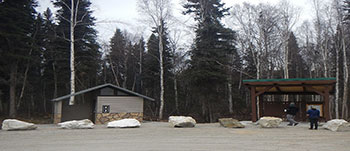
For more information about ADF&G Division of Wildlife Conservation activities funded with Pittman-Robertson funding please visit our website:
Core Funding for Wildlife Management and Research in Alaska Fiscal Years 2017, 2018, and 2019
Hunters Supporting Conservation Wildlife Restoration Celebrates 75th Anniversary
Katie Sechrist works with the Access Defense Program for the Division of Wildlife Conservation at the Alaska Department of Fish and Game
Subscribe to be notified about new issues
Receive a monthly notice about new issues and articles.
